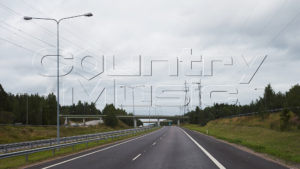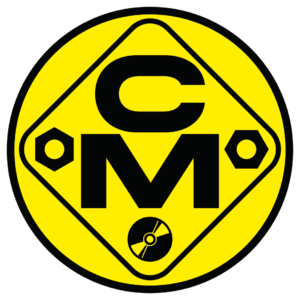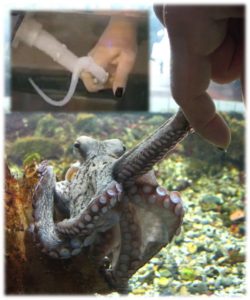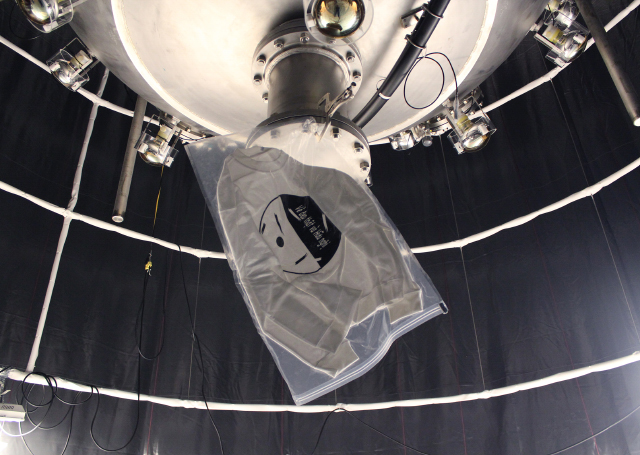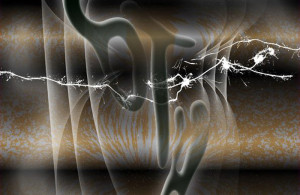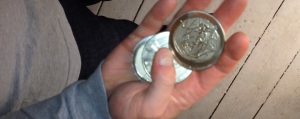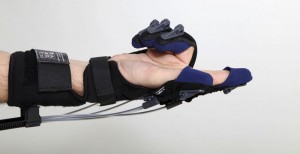“Maybe there is/ a substitute/ for exhibiting” reads an A4 piece of paper (written by artist Sanna Helena Berger) and placed on the door of Stockholm-based project space Minibar during their last ever exhibition Horizon(e) on June 10. After seven years, the press release describes the event as “a last zone of being before departure into elsewhere” with “equal measures of lightness and spiritedness.” The evening included performances and works by Vera Karlsson, Eugene Sundelius von Rosen & Salomo Andren, Klara Utke Acs, Rasmus Myrup and Emily Jones among others, as well as an after party by COUNTRY MUSIC.
“What does it mean to inhabit a space in such a closed locality like the one in Vasastan. What does it mean to be six women starting and running a space together? What does it mean to start a space completely without funding but placing ourselves in the same plane as long-established commercial spaces? ” write Anna Sagström and Matilda Tjäder of Minibar via email about the beginnings of the project. They are two members of the curatorial team from the last three years, which also includes Malin Henningsson, Sofia M. Westin and Aron Kullander-Östling. All artists themselves, and geographically sprawled, the space has become nucleus for the collective.
Upon saying goodbye, Minibar reflect and share with us some of the most memorable projects over the years:

Enigma (Apr 12 to May 3, 2014)
In Minibar’s 6 years of existence there have been a few definite paradigm shifts (in the program and organizationally) and Enigma is one of them. It’s also a good example of a close and conversation-based collaboration with our long standing graphic designer Aron Kullander-Östling, illustrating how his work exists in tandem with how we’ve developed the exhibitions. After a few years of putting on shows as an artist run space that recently had received public funding we were thinking a lot about accessibility and ‘the public’ and I think we got a bit burned out after a while. So for us, Enigma was a way back to our idea of presenting works in the space: with not everything all the time overly explained or in total clarity. Aron’s work reflected this with a large transparent window foil and a shadow foil text inside the space as well as accompanying custom made usb cards we made with encrypted works, notably by Lars TCF Holdhus. The flyer for this show is also a favourite, as well as a text work by Rasmus Fleischer about digital copyright in cities.
With works by: Steve Bishop, Constant Dullaart, Christian Jeppson, Sonia Kacem, Sofia M. Westin, Anna Sagström, Pilvi Takala, Lars TCF Holdhus and Yoga Center through USB cards.

6th sense, January 15 to February 7, 2015
“Another turn in the program was 6th sense, the first in the curatorial collaboration between Ann and Matilda themselves in January 2015. It took shape as a group exhibition and small publication – asking artists and writers to speculate on a fictional sense.”
Heavy winter rain showers framed the space, steaming up the gallery windows. In the middle Jenny Kalliokulju’s female corpse in styrofoam held court with its amputated body and plastic hose pulsating through the torso, circulating blue fabric softener via a water pump like an artificial fountain of life. Visitors became aware of their wet feet by trying not to trip over Joel Dean’s motor vehicle carrying a Coca-Cola ‘Life’ aluminum can with a dying chrysanthemum: the sculpture directed the choreography of the space and the visitors. In the tiny backroom Michael Guidetti’s ‘Skeleton Sweep’ continued with podcast field recordings, interweaving with the narration of Sasha Litvintseva’s video ‘Immortality, Home and Elsewhere.'”
With works by: Joel Dean, Michael Guidetti, Jenny Kalliokulju, Sasha Litvintseva, Anna Sagström & Sydney Shen & included in the pamphlet: Sydney Beaumont, Sean Fabi, Jenny Kalliokulju, Nora N. Khan, Ryan Kuo and Josh Minkus
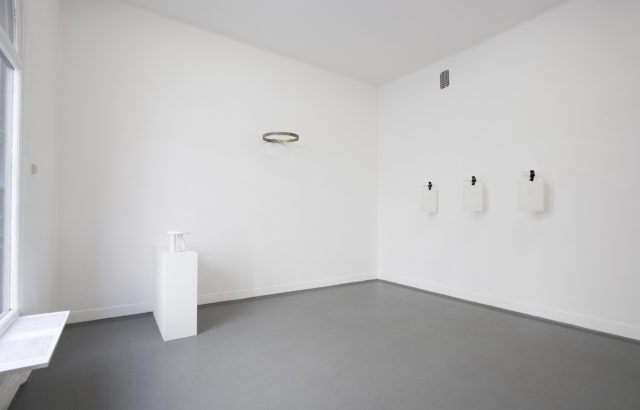
Arche Apeiron, Eva Löfdahl & Sean Raspet, August 22 to September 9, 2016
“[This is ] our most minimal exhibition in the program and the first where we joined a longer-spanning retrospective presentation of one artist with a contemporary body of work by another. Eva Löfdahl was a sculptor we had been curious about for years, as well as based in Stockholm and active since the 80s (and represented Sweden in the Venice Bienniale in 1995), but with a relatively slow exhibition frequency. Our show took focus in Löfdahl’s work with aesthetic representations of scientific formulas and complexities, such as the number pi, physical symmetry and categorization of plants. We exhibited these works in tandem with those by Los Angeles-based artist Sean Raspet (born almost exactly 20 years later than Eva). He presented three synthetic and chemical reformulations of our most common fruits: apple, pear and bananas. They were conceptual and available through the sense of smell, while Löfdahl’s was through vision and imagination. We also intervened and further joined their practices together by making text excisions from their works and put on mirroring sides of our large gallery window.”
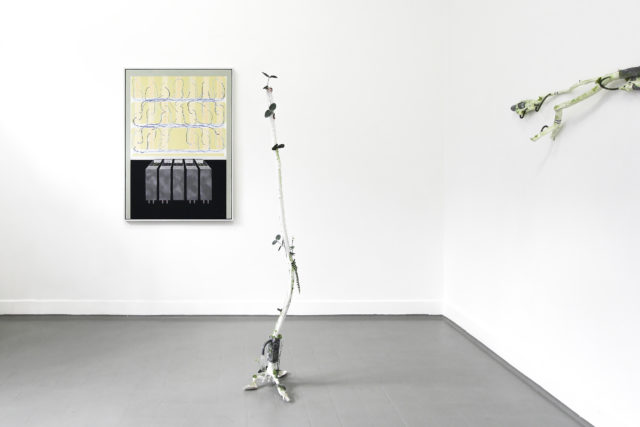
“Working across generations was a semi-frequent activity in our program during the past years; contaminating the archive a little bit (geography in layers, going back in history and being inspired by the artists working alongside us in Stockholm, but inaccessible because of time’s passing); tracing conceptual, material, and theoretical processes – proposing congruence and conflict, simultaneously. The conversation with Ulla Wiggen started via a shaky Skype connection between London and Stockholm, and has continued since. Wiggen was the first and only painter we’ve worked with, and in the exhibition we included two of her paintings of cybernetic systems, circuits and insides of technical objects made in the 1960s as well as one recent painting from her contemporary area of interest; bodily organs. They were paired with Veit Laurent Kurz’ anthropomorphized and militarized branches that mobilized an impermanence in the space. In fact we had planned Kurz’ work for months without finding the right context or partner for it, and the exhibition kept on being postponed, until we came across Wiggen’s work. We also invited British artist Emily Jones to make a permanent piece (that she will come to read in Stockholm on our closing event) and hosted a conversation with Wiggen that became the starting point of an important friendship to us.”

Memoirs found in a Bathtub (Protocol 1-4), April 9 to June 3, 2017
“Inspired by Stanislaw Lem’s Soviet science-fiction novel Memoirs found in a Bathtub, the protocol series was a manifolded entity – testing scripted formats, the relationship between formulas and result, codes and dramaturgies, contemporary forms of (affective/networked) biopolitics, data governance. The series was our last longer body of work before the final opening. For the show, Matilda invited a number of different practices spanning over four separate events, starting with a one-evening screening with 10 influential video works (from Suzanne Treister’s ‘The Gardener’ to Karrabing Film Collective’s ‘Wutharr Saltwater Dreams’), continuing with an eight hour long larp (live action role play) by Susan Ploetz, followed by a discussion with Patricia Reed and Gabriel Widing the next day – discussing somatic practices and notions of the extra-sensory in detail.
The protocol series culminated in the group exhibition Mnemonic Memoirs; tying notions of (rephrased) memory, memoirs, storage, coincidence of temporalities, and other fictions. Sydney Shen’s ticking, kinetic metronome sculpture, a performance by Felix Riemann leaving tele-prompters behind as props, Julia Bondesson’s wood carvings and Jenna Sutela’s video of a home-brewed computer and poem on the window came together in a manifestation of the agreed and disagreed.
With participation by: Graeme Arnfield, Johanna Billing, Julia Bondesson, Karrabing Film Collective, Santiago Mostyn, Susan Ploetz, Jelena Popova, Patricia Reed, PWR, Felix Riemann, Manuel Saiz, Sydney Shen, Jenna Sutela, Suzanne Treister, Gabriel Widing and Amir Yatziv.**
The closing Horizon(e) group event was on at Stockholm’s Minibar on June 10, 2017.
share news item